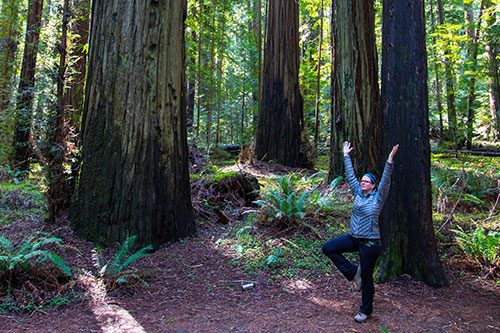Yoga

Robyn has practiced yoga since 1999, and seen incredible health benefits. Her teaching style is to combine Vinyasa Flow with Iyengar yoga philosophies. This allows for the benefit of building the practice on sequential poses while focusing on correct posture and body positioning to decrease the potential for injury and gain the most benefit. Robyn studies the chakra energy system, as well as anatomy and can focus classes on a specific area of the body and energy center.
Certified yoga instruction for customized group or private classes taught by Robyn Wilson, RYT - 200.
Robyn started studying Iyengar yoga in 2000, and practiced different styles from ashtanga to restorative. While she learned from each, she also learned where she gained the most benefits, physically, emotionally, and spiritually. In 2013, she started began yoga teacher training from tth Academy of Yoga in Grand Junction with the focus on Iyengar, graduating in the spring of 2014. She has taught yoga at Colorado Northwestern Community College in Rangely, Colorado and Rocky Mountain National Park.
Because of her background in education, she enjoys not only practicing the poses, or asanas, of yoga, but also to share information about the other limbs of yoga. As the Yoga Journal describes, "These eight steps are the guidelines on how to live a meaningful and purposeful life. They serve as a prescription for moral and ethical conduct and self-discipline; they direct attention toward one's health; and they help us to acknowledge the spiritual aspects of our nature."
The eight limbs include:
- Yama : Universal morality (Nonviolence, Truthfulness, Nonstealing, Continence, Nongreed)
- Niyama : Personal observances (Purity, Contentment, Discipline, Self-study,
- Asanas : Body postures
- Pranayama : Breathing exercises, and control of prana
- Pratyahara : Control of the senses
- Dharana : Concentration and cultivating inner perceptual awareness
- Dhyana : Devotion, Meditation on the Divine
- Samadhi : Union with the Divine
Classes can include these limbs in different degrees and manners, including reading assignments, journaling, mini-lessons, and of course yoga poses. By completing a questionnaire before she meets with the client, the scope of the session and specific interests will be established for a truely custiomized experience.
Additional Definitions:
Hatha Yoga - practice emphasizes proper diet, processes to internally purify the body, proper breathing and its regulation particularly during the yoga practice, and the exercise routine consisting of asanas (bodily postures). The term "Hatha yoga" connotes a system of supplementary physical techniques within the broader concept of yoga.
Iyengar - named after and developed by B.K.S. Iyengar is a form of Hatha Yoga that has an emphasis on detail, precision and alignment in the performance of posture and breath control. The development of strength, mobility and stability is gained through the poses. Iyengar is responsible for the use of props, such as belts, blocks, and blankets, as aids in performing asanas (postures). The props enable students to perform the asanas correctly, minimising the risk of injury or strain, and making the postures accessible to both young and old.
Vinyasa - usually refers to a transition between two different positions. The term "Vinyāsa" can also be used to reference a style of yoga practiced as one breath, tied to one movement. Classes of Vinyasa flow tie breath with a series of poses that build on each other to reach a specific goal.
Chakra - translated as "wheel" from sanskrit, Chakras are are conceived as an energy focal point, bodily functions or psychic node. The concept is found particularly in the tantric traditions of Hinduism, Buddhism, Jainism. Balancing takes place through mental concentration, breathing exercises and postures.

